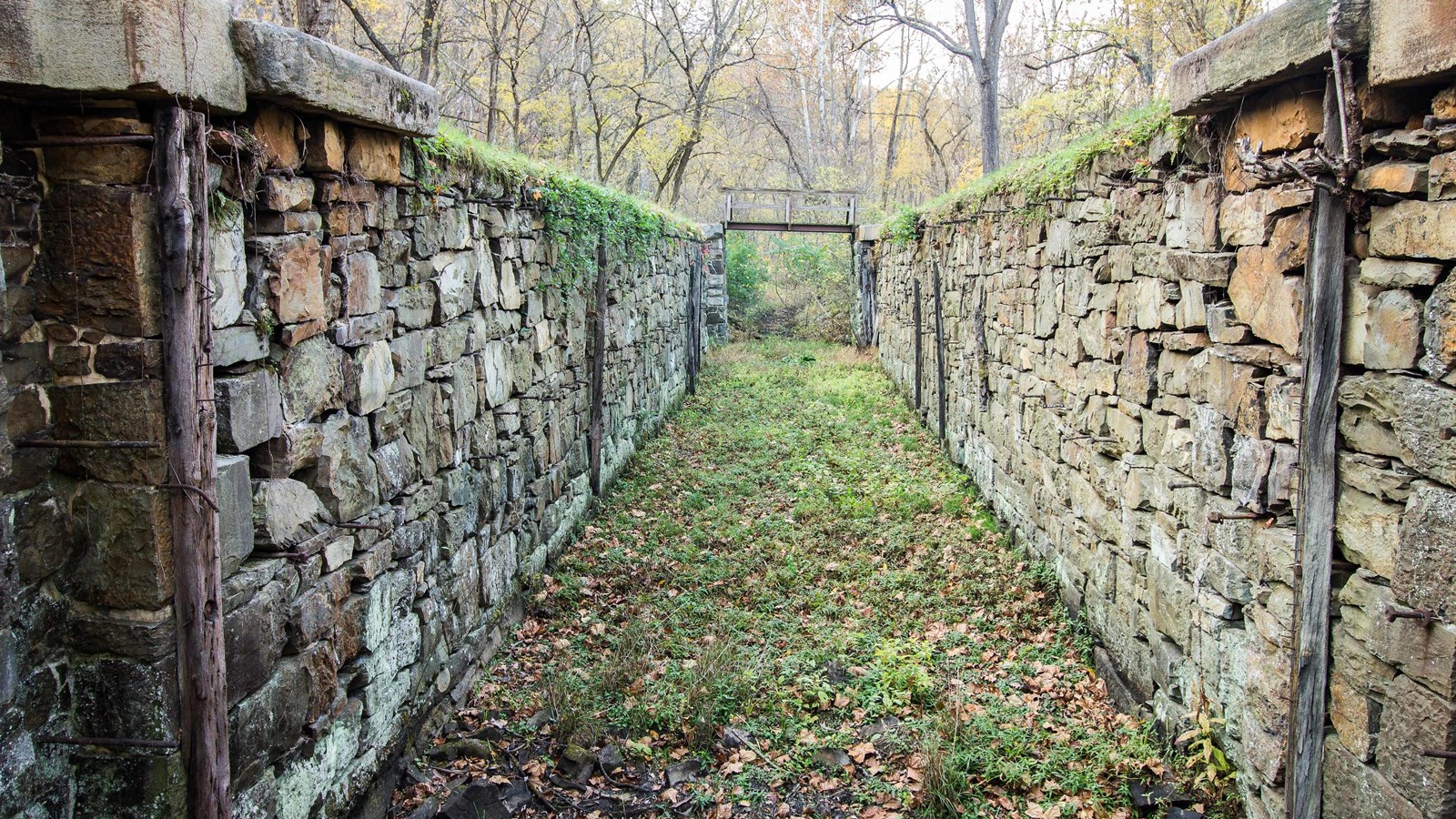Last updated: October 10, 2024
Place
C&O Canal Lock 59

Paul Graunke
Quick Facts
Amenities
1 listed
Scenic View/Photo Spot
Along the 184.5 miles of the canal are 74 lift locks. These locks were put into place to help boats overcome the 605-foot elevation change between Georgetown and Cumberland. The C&O Canal is like a staircase, canal boats traveled along the flat sections and used the locks to take a “step up or down” about eight feet. The locks typically had hand-operated miter gates that were simple and followed Leonardo da Vinci’s original 1485 design. Entering the lock was the most demanding part of canalling.
Lock 59 is the 2nd of the 13 upper locks that was constructed as a “composite lock”, or a lock made with more than one material. The stone available in this area broke apart when quarried and could not be used. Instead, this lock is made of a double layer of kyanized (treated) wood planks and uncut stone. However, the use of wood created many problems. The wood lining in many of these locks were replaced by concrete from 1891–1924. In this lock, very little of the wood planks remain, but the unique wooden quoin that held the gate’s heel post is still there.
On the other side of the lock is a bypass flume that allowed water to bypass the lock to water the level below. Remnants of the stone foundation of the lockhouse can be found on the other side of the towpath.
Lock 59 is the 2nd of the 13 upper locks that was constructed as a “composite lock”, or a lock made with more than one material. The stone available in this area broke apart when quarried and could not be used. Instead, this lock is made of a double layer of kyanized (treated) wood planks and uncut stone. However, the use of wood created many problems. The wood lining in many of these locks were replaced by concrete from 1891–1924. In this lock, very little of the wood planks remain, but the unique wooden quoin that held the gate’s heel post is still there.
On the other side of the lock is a bypass flume that allowed water to bypass the lock to water the level below. Remnants of the stone foundation of the lockhouse can be found on the other side of the towpath.
